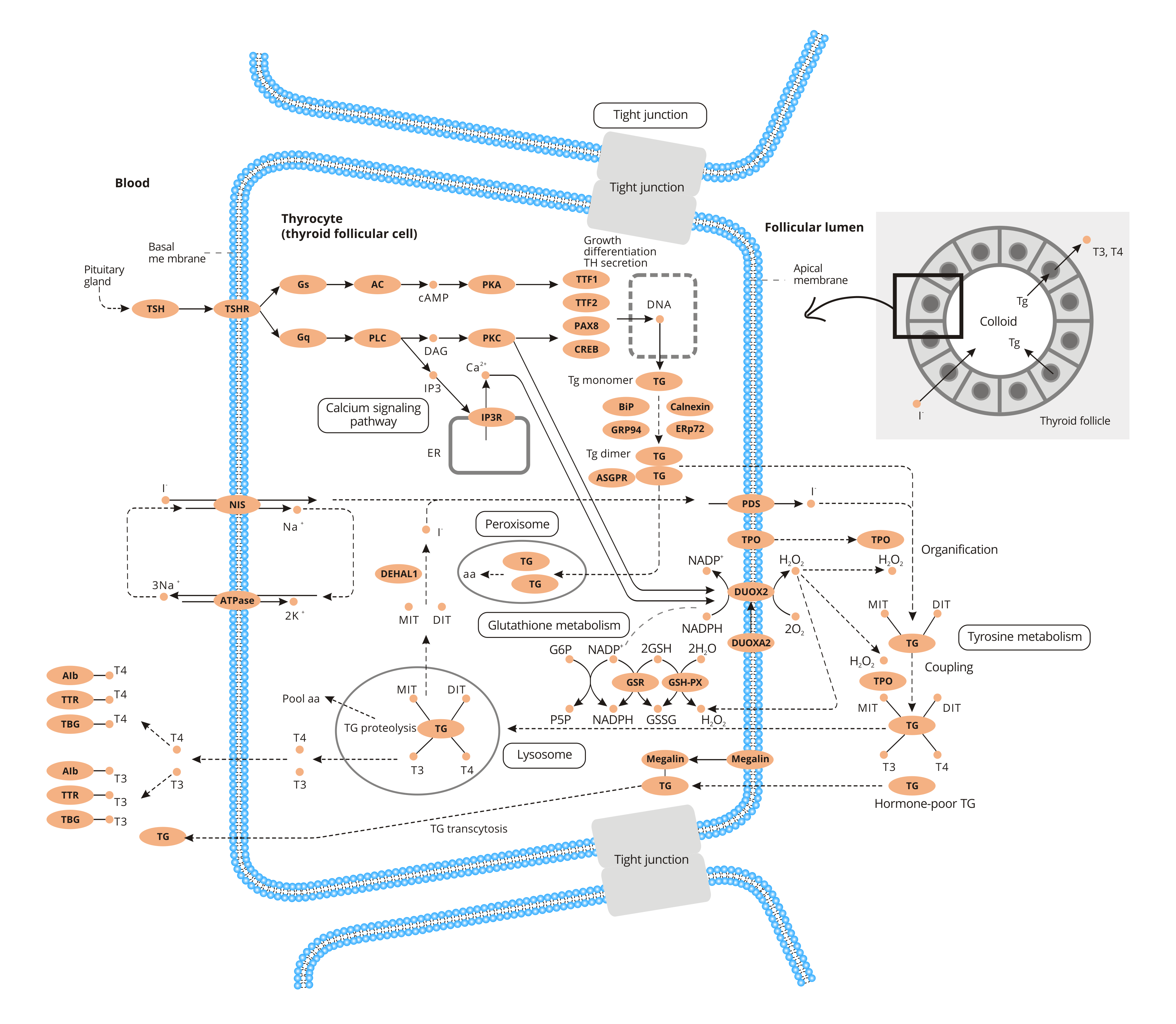
what Are Thyroid Hormones?
Thyroid hormones are hormones produced and released by the thyroid gland. There are two kinds of thyroid hormones: triiodothyronine (T3) and thyroxine (T4). And thyroid hormones are mainly found in the blood in the form of T4. T4 has a longer half-life than T3. T4 is converted to active T3 by deiodinase (5'-iodinase) in human cells.
The Function of the Thyroid Hormone
Thyroid hormones have an impact on every cell and all the organs of the body. They promote metabolism and growth & development and play an important role in the development of the central nervous system and its function. Thyroid hormones also stimulate the increase of adrenergic receptors, which may be responsible for cardiovascular disease.
The Process of Thyroid Hormone Synthesis
Thyroid hormone synthesis takes place in follicular cells of the thyroid gland. The whole process involves an intact and coordinately controlled synthesis pathway containing sodium iodide symporter (NIS), thyroperoxidase (TPO), thyroglobulin, and adequate dietary iodide.
The production of the thyroid hormone is initiated by the absorption of iodine from the GI tract, where the iodine is reduced to iodide and released into the plasma. Follicular epithelial cells take up iodide ions from the blood through sodium-iodide symporter (NIS). Iodide uptake is an active transport against inverse electrochemical gradient because the iodide levels in the thyroid gland are much higher than that in the plasma. Iodide is transported at the apical membrane into the follicular lumen by pendrin. The oxidization of iodide by thyroperoxidase (TPO) forms active iodine. The active iodine binds to the tyrosine residues of the thyroglobulin under the action of an iodinase, forming two iodotyrosines: monoiodotyrosine (MIT) and diiodotyrosine (DIT). The iodotyrosines undergo subsequent coupling reactions by TPO to generate T4 and T3, both of which are stored as colloids in the thyroid gland. T3 and T4 are transported through the bloodstream on thyroxine-binding globulin(TBG) and thyroxine-binding prealbumin.
The Regulation of Thyroid Hormone Synthesis
The hypothalamus and the pituitary gland help control the thyroid gland. The hypothalamus produces thyrotropin-releasing hormone (TRH), which subsequently spurs the pituitary gland to release thyroid-stimulating hormone (TSH). A low level of thyroid hormone signals the hypothalamus to release more TRH, which sends signals to the pituitary to release more TSH. TSH stimulates the thyroid gland to release T3 and T4 until the body is receiving the required amount. While excessive thyroid hormones give negative feedback to the pituitary gland, which stimulates less TSH secretion. Less TSH leads to a less release of TRH, forming a circular route that results in less thyroid hormone production.
The hypothalamus-pituitary gland-thyroid gland system maintains the balance of thyroid hormones in the body. Therefore, any obstacles in this system will disturb the balance and lead to related diseases.



